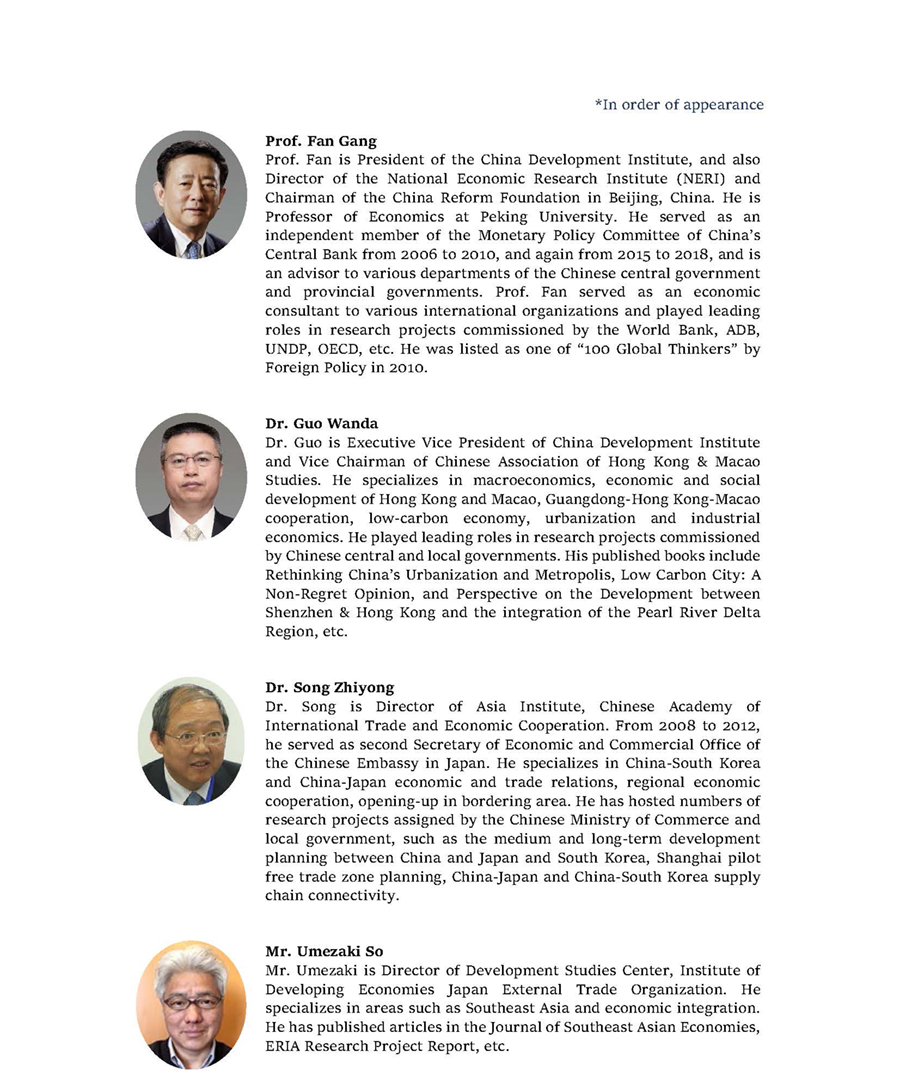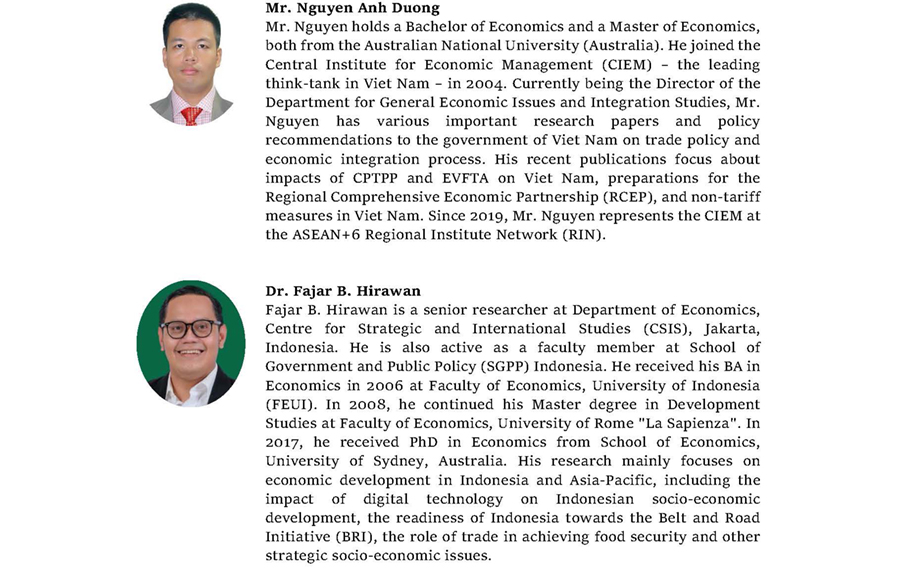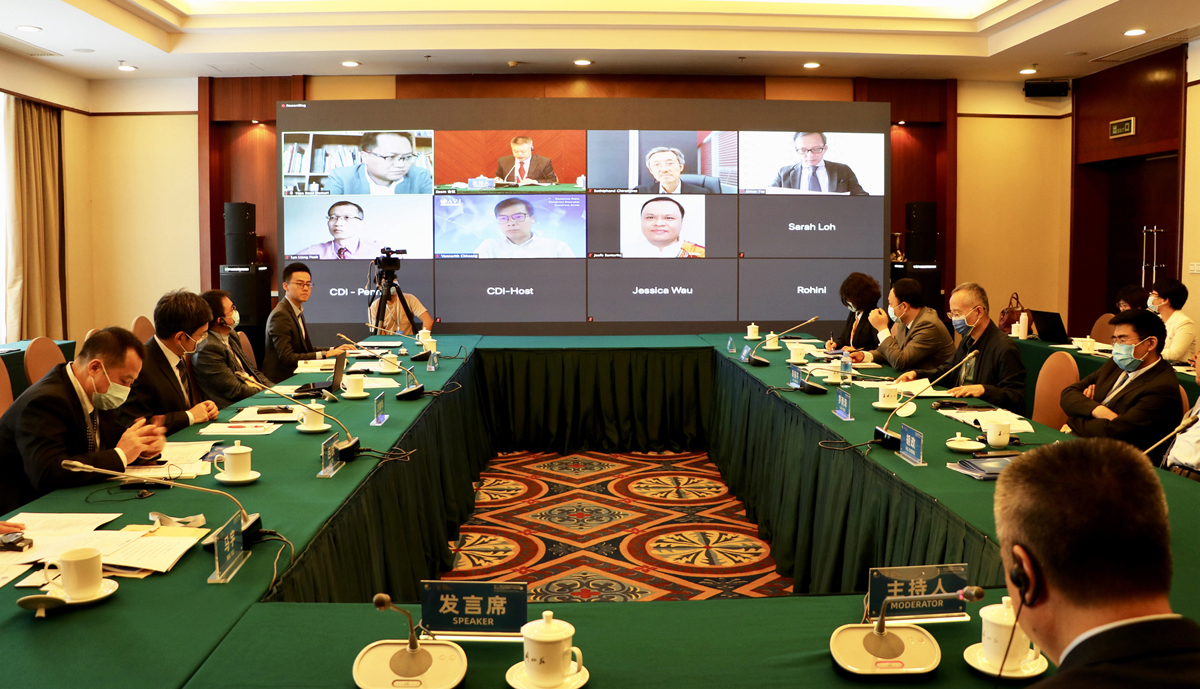RCEP at new stage and its Role as engine of regional economy info
Information

2022 marks the beginning of the world’s largest free trade agreement, the Regional Comprehensive Economic Partnership (RCEP).
Against the backdrop of the ongoing global pandemic and a struggling global economy, the RCEP is expected to boost regional economic recovery and create economic momentum for years to come.
This edition of CDI webinar aims to provide a platform for open and inclusive dialogue between scholars from RCEP member countries,
with the shared information and insights helping attendees to better understand and benefit from the RCEP.
Focus
- Among the wide range of topics covered by the RCEP agreement, which specific areas are suitable for the early harvests of win-win cooperation under the RCEP?
- How should RCEP member countries collaboratively build a resilient and safe regional supply chain and value chain, which facilitates the regional economic stability?
- How can local businesses adapt and benefit from the RCEP, especially the MSMEs that have been hit the hardest by the changing global economic landscape?
This webinar is made possible with the invaluable support from fellow think tanks. As we strengthen bonds with old friends, we look forward to building new friendships in 2022.
In order of appearance:
- Chinese Academy of International Trade and Economic Cooperation
- Institute of Developing Economies Japan External Trade Organization
- The Australian National University
- University of Auckland, New Zealand
- Korea Institute for International Economic Policy
- KSI Strategic Institute for Asia Pacific, Malaysia
- Thailand Development Research Institute
- Singapore Institute of International Affairs
- University of the Philippines Diliman
- Royal Academy of Cambodia
- Universiti Brunei Darussalam
- Central Institute for Economic Management, Vietnam
- Center for Strategic and International Studies, Indonesia
Zoom meeting registration:
https://us06web.zoom.us/meeting/register/tZcrdO6sqT4qHtGJkg3Ve6OOFUwM-4ij7jXc
RCEP: Sino-Japan Economic and Trade Cooperation Outlook
Information

The Regional Comprehensive Economic Partnership (RCEP) trade agreement will take effect starting from Jan 1, 2022. What are the opportunities and challenges faced by China and Japan bilateral trade and economic exchange? What are the implications for Sino-Japan industrial cooperation?
On November 4th, 2021, China Development Institute and Pangoal Institution co-organized webinar on Sino-Japan industrial development and bilateral cooperation under RCEP.
China and Japan have large room for cooperation in emerging industries and the two sides should seek complementary development, scholars said on Thursday.
They made the remarks at an online seminar on China-Japan industrial cooperation and development, co-organized by the Shenzhen-based think tank China Development Institute and Beijing-based think tank Pangoal Institution.
"For China and Japan, the space for cooperation in traditional industries is not that large. But in emerging industries, it is huge," said He Jun, director of the enterprise innovation research office of the Institute of Industrial Economies at the Chinese Academy of Social Sciences.
"This is because each of the two countries has developed unique advantages in emerging industries. Therefore, they can leverage each other's strengths to jointly promote the development of those industries."
He took the industrial internet as an example. "While Japan excels in software and operational technology, China is developed in communication technology. If the two could work together to form a sound cooperative mechanism, it will be a win-win situation for both sides."
He's view was echoed by Cao Zhongxiong, director of the New Economy Research Centre at CDI, who believes China and Japan could explore more cooperation in blue ocean markets in the digital field by integrating China's digital technologies with Japan's manufacturing.
Japan can also provide talent support for the development of the Chinese digital economy, he added.
Cao also noted that China's globalization drive, transformation of industrial structure and consumption upgrade will create large opportunities for Japan and called on Japan to grasp the opportunities.
-China-Japan industrial cooperation still has big room to grow, China Daily, Nov 5, 2021
(source:https://enapp.chinadaily.com.cn/a/202111/05/AP6184e5e3a310b7d50bab6978.html)
The RCEP Signing: Common Future and Shared Prosperity Towards Regional Cooperation
Information
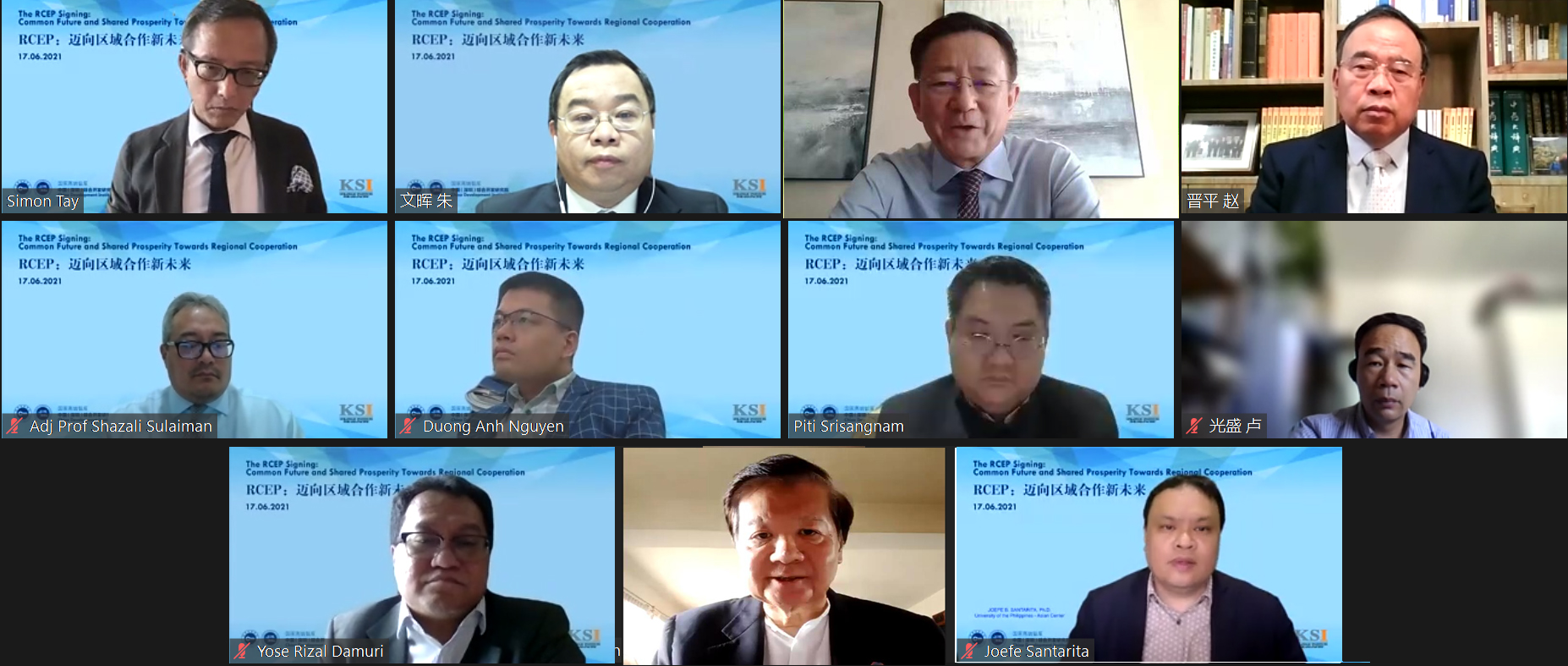
The year 2021 not only marks the 30th anniversary of China-ASEAN dialogue and relations, but also witnesses the steady progress of the Regional Comprehensive Economic Partnership (RCEP). Once implemented, the RCEP is expected to significantly eliminate tariffs between its signatory nations, and further promote regional value chains, trade, and intellectual property. The RCEP will help form a more secure and diversified supply chain, while facilitating closer regional economic and social connections.
On June 17th, China Development Institute and KSI Strategic Institute for Asia Pacific jointly held a webinar, bring together public representatives, academics, and professionals in the hope of providing insights into the next steps for regional economic cooperation and the RCEP’s complementary role to the Belt and Road Initiative (BRI).
Date: Thursday, 17 June 2021
Time: 14:30 (GMT+8)
RCEP, the largest free-trade agreement deal in history
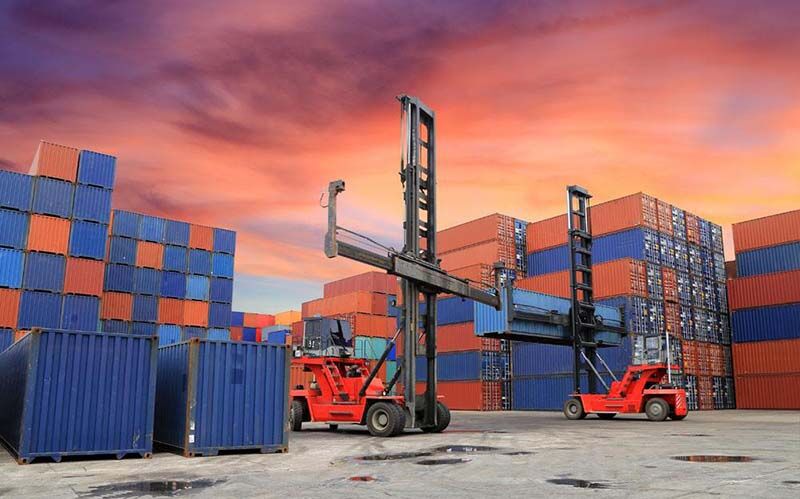
In October, industrial output rose 6.9% y/y, the same rate as in September, and the highest rate this year, up 2.2 pps from October 2019. The national service production index has been rising since the economic opening in February, and achieved positive growth in May. It rose 7.4% y/y in October, up 2 pps from September, and up 0.8 pps from October 2019. Investment rose 1.8% y/y in October, up 1 pps from September.
Retail sales of social consumption goods recovered further, and were up 4.3% y/y, and up 3.4 pps from Q3. Their real growth was 4.6% y/y, up 5 pps from Q3.Even the pandemic’s hardest-hit restaurant income has avoided a fall, and was up 0.8% y/y.
Price rises tempered amid monetary expansion. In October, CPI growth fell to only 0.5% y/y, mostly pulled down by significant meat price drops. After adjusting for seasonal factors, CPI fell -0.4% m/m. We expect CPI growth to turn from positive to negative next month, and that this will be a trend for the near future. The ex-factory price index of industrial goods fell -2.1% y/y. PPI fell -2.4% y/y. M1 rose 9.1% y/y, up 1 pps from September, and up 5.8 pps from last October, reaching its highest growth rate since February 2018.
In October, exports rose 7.6% y/y, and imports rose 0.9% y/y. Both of their seasonal adjusted growth rates show upward trends. We expect the appreciation of RMB and economic recovery to bring higher import growth.
On November 15th, 2020, 15 countries — members of the Association of Southeast Asian Nations (ASEAN), and Australia, China, Japan, South Korea and New Zealand signed the Regional Comprehensive Economic Partnership (RCEP), arguably the largest free trade agreement in history. This is the first time China has signed up to a regional multilateral trade pact. This is an example of China’s commitment to the greater openness repeatedly advocated by President Xi Jinping. While the trade deal certainly will boost these countries’ economies in the short term, in the long term it is "a victory of multilateralism and free trade," as Prime Minister Keqiang Li put it, in contrast to U.S. President Donald Trump’s trade policy.
Pan-Beibu Gulf Think Tank Summit 2020
Information
As COVID-19 injects uncertainty into the world economy, how can the Pan-Beibu Gulf countries advance regional industry chain and further promote economic cooperation under the Regional Comprehensive Economic Partnership (RCEP) framework, while accelerating economic recovery? The Pan-Beibu Gulf Think Tank Summit 2020 aims to provide insights of the RCEP agreement and deliver practical recommendations for business and public policy leaders.
On Oct 15, 2020, the Pan-Beibu Gulf Think Tank Summit, themed “Regional Connectivity for Shared Prosperity”, was held in Nanning, China, with international speakers attending via online conferencing system. Although global economy was impacted by the pandemic, panellists agreed that China-RCEP trade and economic cooperation uptrend is expected to continue with the integration and maximization of different modes of transportation, while boosting economic recovery and employment. Bilateral trade and investment activity will be further supported by the RCEP free trade agreement, while assuring a stable and safe local and regional supply chain. In addition, emerging industries like digital economy, maritime economy and big data could become the new drive for regional economic cooperation.
Since 2006, PBG Economic Cooperation Forum has been successfully held for 11 editions with the support of international think tanks and research institutes. Over the years, the forum has contributed significantly to China-ASEAN relation. As the parallel conclave of the PBG Economic Cooperation Forum, this year’s PBG Think Tank Summit provided a platform for sharing ideas and views among state leaders, senior government officials, business leaders and renowned scholars from China and the ASEAN countries in its 6th edition.
RCEP Can Give Boost to International Trade
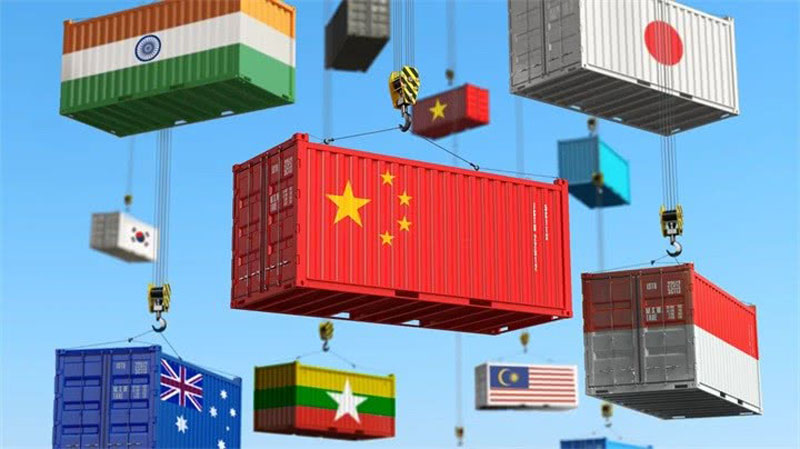
India’s sudden withdrawal has hit negotiations involving 16 countries of the Regional Comprehensive Economic Partnership treaty, which is expected to conclude this year. The RCEP is a proposed free trade agreement between the countries of the Association of Southeast Asian Nations, and six states with which ASEAN has FTAs.
China needs to remain open towel coming India to join the RCEP whenever it is ready, deepen reform and opening-up to benefit countries entering the Chinese market, and mediate among different countries to ease trade frictions to contribute to the conclusion of RCEP negotiations, which can inject fresh impetus to global trade.
With a population of about 3.5 billion, this trading bloc has a total gross domestic product of more than $21 trillion, accounting for more than 30 percent of global trade. If the RCEP is finalized, it will be the world’s largest regional FTA.
The RCEP is more accessible to developing nations. Its framework complements the World Trade Organization by covering traditional issues such as goods trade, dispute settlement and service trade as well as new ones, including investment intellectual property, digital trade, and finance and telecommunication.
It plans to cut restrictions and discriminatory measures especially in the field of service trade. The RCEP can lay the foundation for developing countries participating in the treaty to get involved in higher FTA levels in the future, which is significant for promoting free trade between member countries in the era of globalization.
Since WTO reforms have not yet been launched, the RCEP will offer great opportunities for global trade, especially for China. Due to factors such as the unilateralism of some major countries, the number of permanent WTO judges has come down from seven to three, with the tenure of one of them concluding by the end of this year.
Participation in the RCEP will be an important approach for China to cope with Sino-US trade frictions and stabilize its foreign trade growth in the short term. In the long term, it is expected to promote China’s high-level opening-up and further its participation in regional integration.
China will further expand its economic and trade partners among the RCEP member countries and make greater contributions for maintaining the prosperity of the Asia-Pacific region.
It will also share its experiences and help RCEP member countries enhance confidence in free trade and combine the RCEP framework with the Belt and Road Initiative to produce joint results.
At present, all parties have reached consensus on more than 90 percent of the agreement text. However, the China-United States and Japan-Republic of Korea trade frictions, and India’s withdrawal, continue to pose challenges.
India has concerns about the potential negative impact of imports and lacks confidence in the competitiveness of the domestic industry. It has filed many anti-dumping cases against China, and has established a complicated non-tariff system to protect the domestic market.
In this regard, China first needs to promote to the member countries to adopt more proactive and pragmatic strategies toward the conclusion of negotiations while respecting ASEAN’s dominant role.
China needs to uphold the principle that the 15 RCEP countries can go ahead with the agreement that is open to India, which reflects China’s openness toward foreign cooperation as well as its determination to adhere to multilateralism and trade liberalization.
Second, some Southeast Asian countries are concerned that domestic markets may bear the brunt of China’s exports once the RCEP treaty is concluded. China needs to further reform and open up, show the huge potential of the Chinese market to enterprises and investors of other countries participating in the RCEP, and encourage countries to invest in China and facilitate RCEP negotiations.
The second China International Import Expo recently held in Shanghai allowed foreign enterprises to see the great returns of tapping into the Chinese market and demonstrated China’s confidence as the world’s largest market. The Foreign Investment Law will come into effect in 2020, when foreign investment and business activities in China will be more secure.
Third, China needs to further play its role as a mediator. Since Japan- ROK economic and trade frictions are showing no signs of easing in the short term, China needs to respect the dominant role of ASEAN while continuing to mediate between countries as a major power and promoting countries participating in RCEP negotiations to adopt more proactive pragmatic strategies, which can turn risks into opportunities, and lay the foundation for future negotiations for the China-Japan- ROK Free Trade Zone and the China-India trade agreement.
In the era of globalization, RCEP member countries need to remain open and inclusive, participate in negotiations proactively and promote regional integration to better cope with challenges caused by anti-globalization and trade protectionism.
As the world’s largest regional agreement, the RCEP will serve as a multilateral cooperation platform for member countries, provide a new approach for countries to address problems, advance cooperation in the Asia-Pacific region and give new impetus to global trade.

